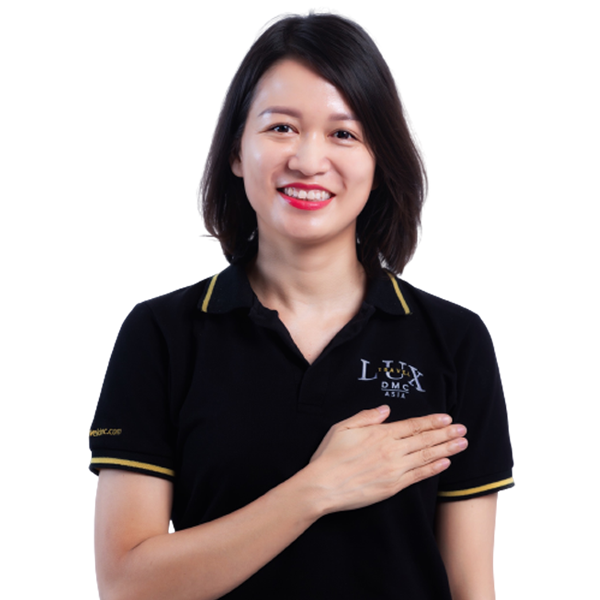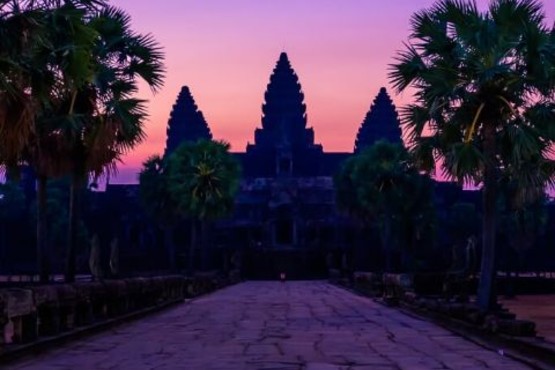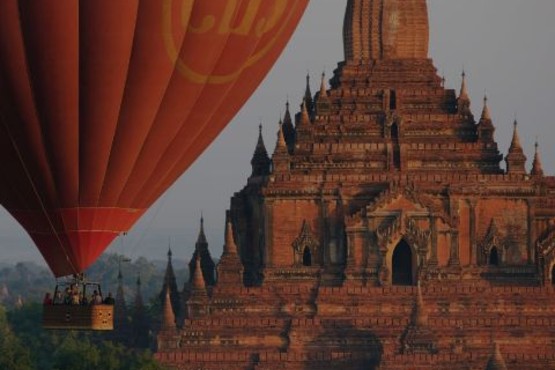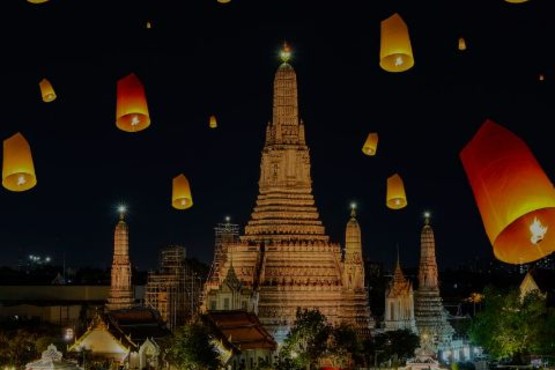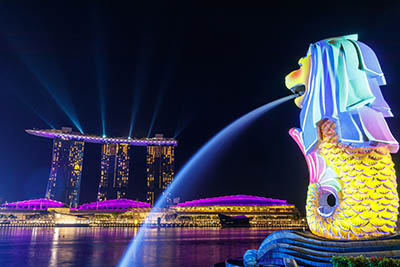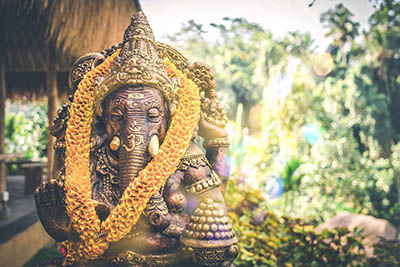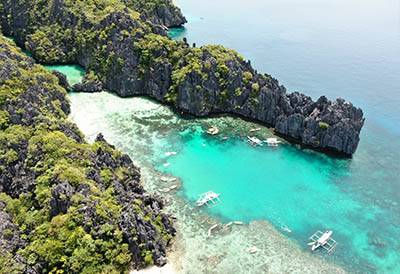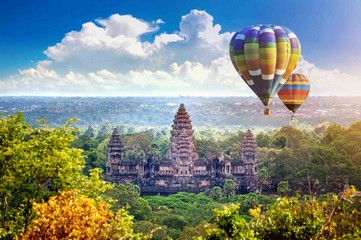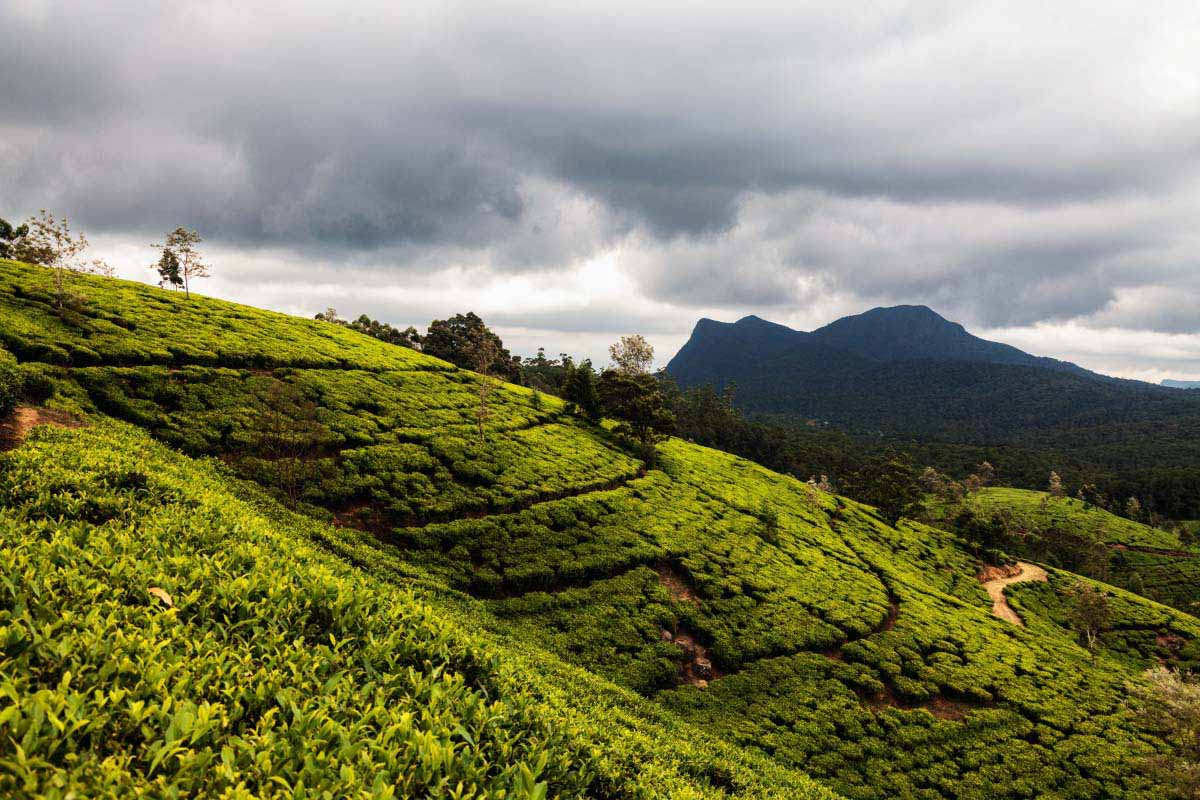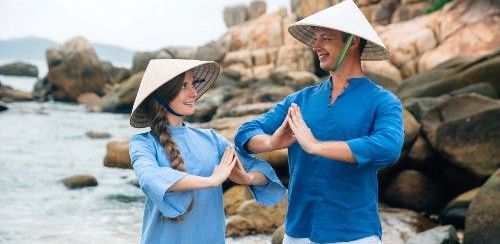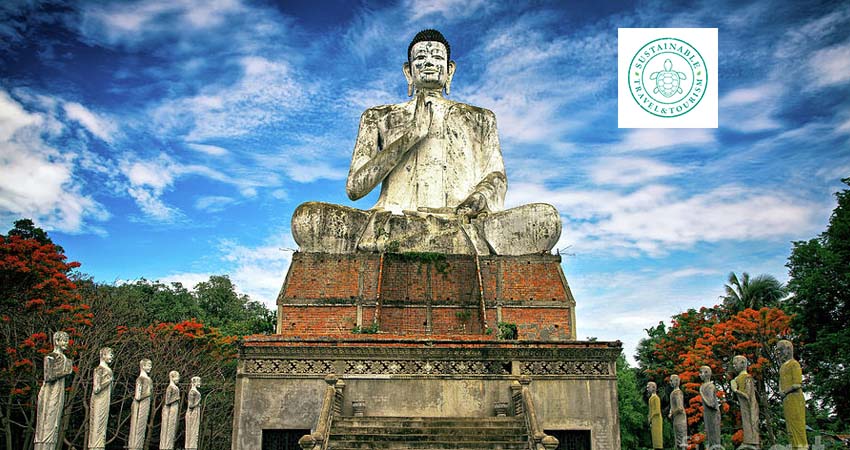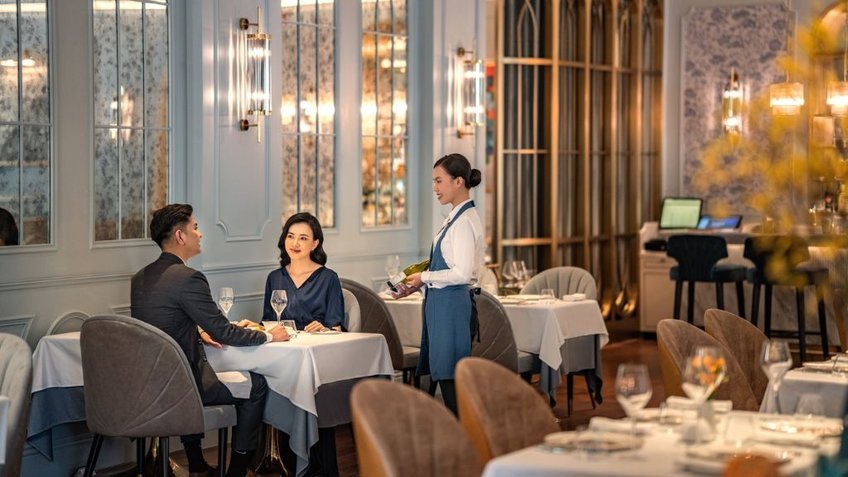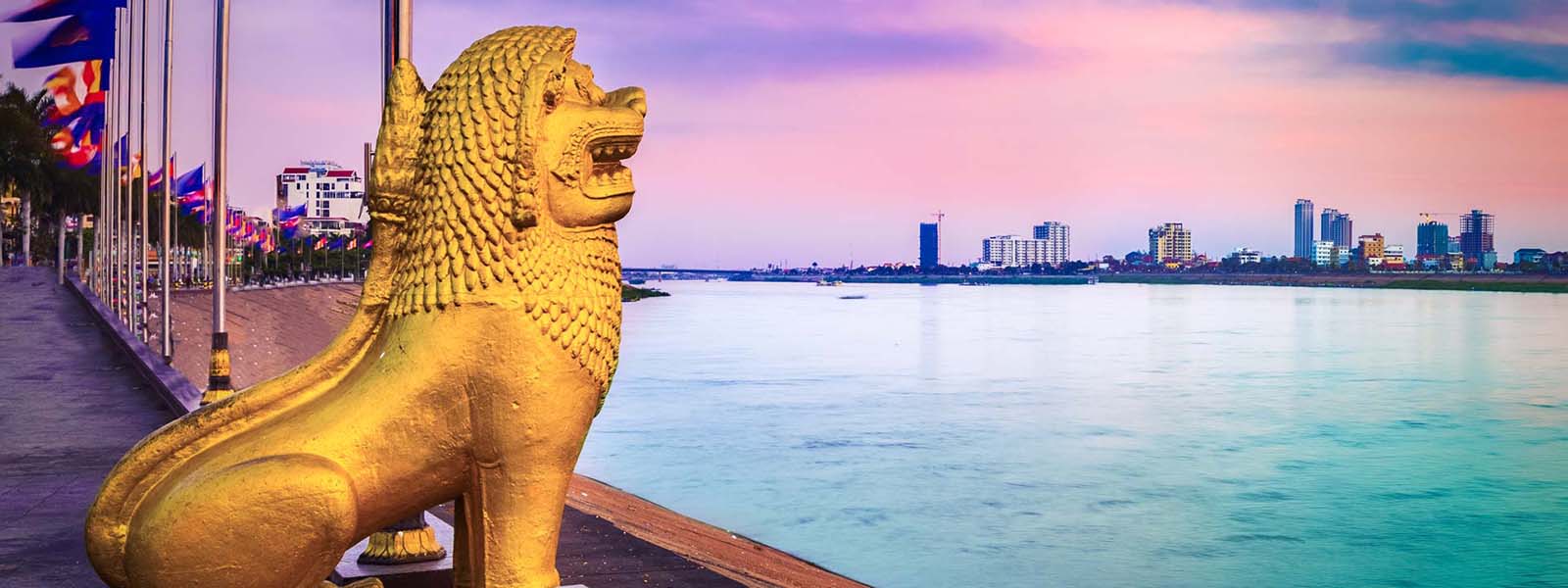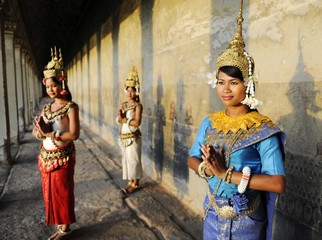Explore Our
Phnom Penh Tour
Phnom Penh embodies the essence of Asia and the warm hospitality of the Cambodian people. The city boasts numerous cultural and historical attractions that captivate visitors, including the Royal Palace, Silver Pagoda, National Museum, Wat Phnom, and the Killing Fields. Additionally, there are other fascinating destinations such as the ancient capital Oudong, Angkor-era ruins at Phnom Chisor and Phnom Da, the Tonle Bati eco-tourism site, and a beautiful golf course in neighboring Kandal province.
The Phnom Penh Tour is part of the Cambodia Travel offered by Lux Travel DMC, providing an unforgettable experience for all travelers.
Explore Our
Phnom Penh Tour
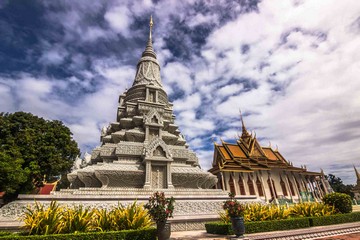
Our Luxury Phnom Penh Tours
Travel Guide
1. Best Time To Travel Phnom Penh
There are two distinct seasons – dry (October to late April) and wet (May to late September).
Obviously, December and January is the best time to visit Phnom Penh, when you'll be able to enjoy dry and cool weather during your vacation.
2. How To Get Around In Phnom Penh?
Remok
Remok, similar to Thailand’s tuk-tuk, comprises a passenger carriage that’s pulled by a motorcycle. The most common method of transportation for tourists, remok is excellent for small groups as it can accommodate 4 (or more) passengers at a time.Moto
Moto or motorcycle taxis are great for short trips within Phnom Penh, and those which are driven by English-speaking locals can be found mostly in Phnom Penh’s tourist-friendly areas such as Sisowath Quay and Independence Monument. Expect to pay more if you’re traveling during the night.
Cyclo
Traveling by cyclo is excellent for those looking to visit landmarks within the Phnom Penh City Center such as the Royal Palace, Silver Pagoda, National Museum of Cambodia, and Wat Ounalom. While you can find cyclos parked near popular hotels, restaurants and popular landmarks, you can enjoy a full day of sightseeing by hiring one from The Cyclo Center on Street 158.
City taxis
You can find city taxis along Sisowath Quay and outside major hotels all over Phnom Penh, but you can also easily book 1 through the phone or travel agencies. The fastest and safest method of transportation in Phnom Penh, many taxi companies offer 24/7 services.
City buses
City buses allow you to experience a truly authentic way of getting around in Phnom Penh. Buses in the city are also incredibly cheap to explore the city. Do note that most of these buses are not equipped with air-conditioning and can get very packed during peak traffic hours.
3. Top Best Things To Do For Phnom Penh Tour
Cambodian Living Arts – Apsara and Traditional Khmer Dance
- Location: Blvd Samdach, Phnom Penh, Cambodia
- Open: Monday, Wednesday, Friday and Saturday from 7 pm onwards
Frizz Cooking Class
- Location: #67 Oknha Chhun St. (240), Phnom Penh, Cambodia
- Open: Daily from 10 am to 10 pm
Sisowath Quay in Phnom Penh
- Location: Sisowath Quay, Phnom Penh, Cambodia
Cambodian Country Club Equestrian Center
- Location: 2004 Street, Group 6, Sangkat Toeuk Thla, Khan Sen Sok, Phnom Penh, Cambodia
- Open: Daily from 8 am to 6 pm
4. Top 8 Tourist Attraction For Phnom Penh Tour
Royal Palace and Silver Pagoda
- Location: Samdech Sothearos Boulevard (between 184th Street and 240th Street), Phnom Penh, Cambodia
- Opening Hours: Monday–Thursday, and Saturday from 8 am to 5 pm, Fridays from 8 am to 6 pm, Sundays from 8 am to 5.30 pm
National Museum of Cambodia
- Location: Preah Ang Eng Street 13, Phnom Penh, Cambodia
- Open: Daily from 8 am to 5 pm
Central Market (Phsar Thmey)
- Location: Street 130, Phnom Penh, Cambodia
- Open: Daily from 7 am to 6 pm
Independence Monument
- Location: Sangkat Boeng Keng Kang Ti Muoy, Phnom Penh, Cambodia
The Killing Fields
- Location: Phnom Penh, Cambodia
- Open: Daily from 7.30 am to 5.30 pm
Tuol Sleng Genocide Museum (S-21 Prison)
- Location: St 113, Phnom Penh, Cambodia
- Open: Daily from 8 am to 5 pm
Wat Langka
- Location: Street 282 (Samdach Louis Em), Phnom Penh, Cambodia
- Open: Daily from 6 am to 7 pm
Wat Ounalom
- Location: 172 Ly Yoat Lay Street, Phnom Penh, Cambodia
- Open: Daily from 6 am to 6 pm
5. 5 Best Restaurant In Phnom Penh
ARTillery
- Location: Street 240 1/2, Phnom Penh, Cambodia
- Open: Daily from 7.30 am to 9 pm
Malis Restaurant Phnom Penh
- Location: #136 Street 41, Phnom Penh, Cambodia.
- Hours: 6 am–10 pm daily.
Frizz Restaurant
- Location: 67 Street 240, Phnom Penh, Cambodia
- Open: Daily from 10 am to 10 pm
Le Deli Bistro Gourmet
- Location: 178 13 Street, Phnom Penh, Cambodia
- Open: Monday–Saturday from 11 am to 2 pm and from 6 pm to 9.30 pm (closed on Sundays)
Lemongrass Restaurant
- Location: #14, Street 130, Phsa Kandal 1, Phnom Penh, Cambodia
- Open: Daily from 10 am to 11 pm
6. Best Nightlife Experience In Phnom Penh
Cadillac Bar & Manhattan Lounge
- Location: 219E Preah Sisowath Quay, Phnom Penh, Cambodia
- Open: Daily from 7 am to midnight
Riverside Bistro
- Location: House 273A Oknha Ouk Lonn St. (148), Phnom Penh, Cambodia
- Open: Daily from 7am to 1.30am
Score Sports Bar & Grill
- Location: #5 Street 282, Wat Lanka Phnom Penh, Cambodia
- Open: Daily from 8am to midnight
Street 308
- Location: St 308, Phnom Penh, Cambodia
Zeppelin Café
- Location: 7 St 278, Phnom Penh, Cambodia
- Open: Daily from 6.30 pm to 4 am
7. Top 3 Best NightClub For Phnom Penh Tour
Club Love
- Location: #3, Street 278, Wat Langka, Phnom Penh, Cambodia
- Open: Daily from 9pm to 4am
Heart of Darkness
- Location: 38 Rue Pasteur No. 51, Phnom Penh, Cambodia
- Open: Daily from 9 pm until late
Pontoon
- Location: 80 Jayavarman 7 St. (172), Phnom Phen City, Cambodia
- Open: Daily from 9 pm until late
8. Top Luxury Hotel In Phnom Penh
InterContinental Phnom Penh
- Address: 296 Mao Tse Toung Boulevard (245), Khan Chamkar Mon Phnom Penh, Phnom Penh, 12306, Cambodia
La Rose Boutique Hotel & Spa
- Address: Khan Chamkar Mon Phnom Penh, Phnom Penh, Cambodia
Hotel Cambodiana
- Address: 313 Preah Sisowath Quay, Khan Doun Penh Phnom Penh, Phnom Penh, Cambodia
Sofitel Phnom Penh Phokeethra
- Address: Samdach Sothearos Boulevard (3), Khan Chamkar Mon Phnom Penh, Phnom Penh, Cambodia
Meet our Expert
